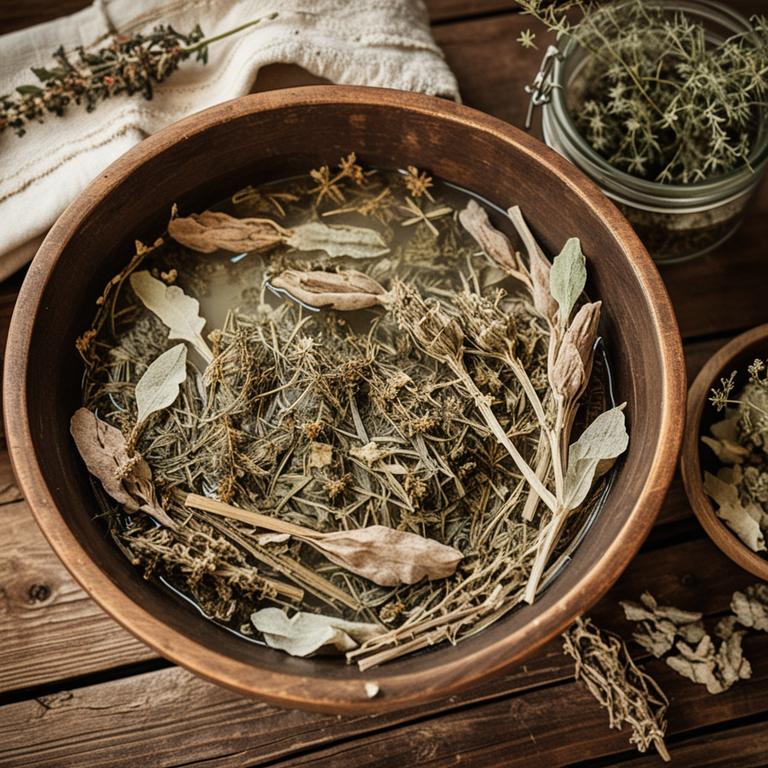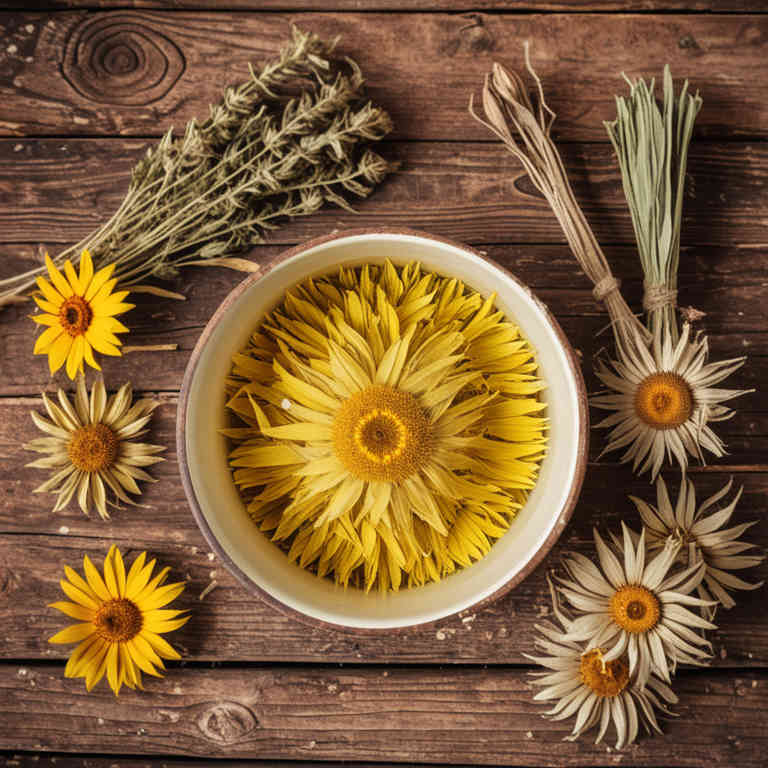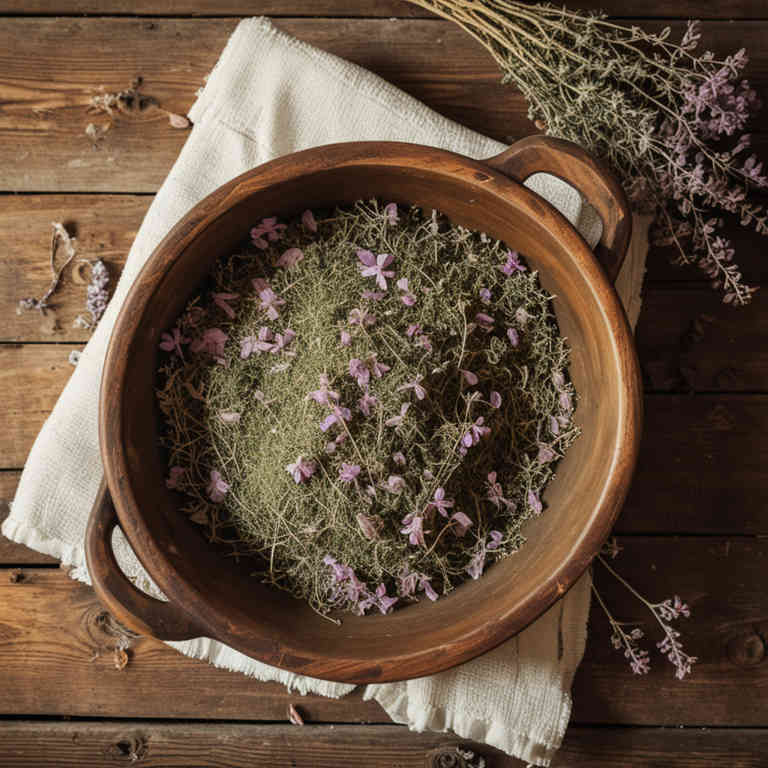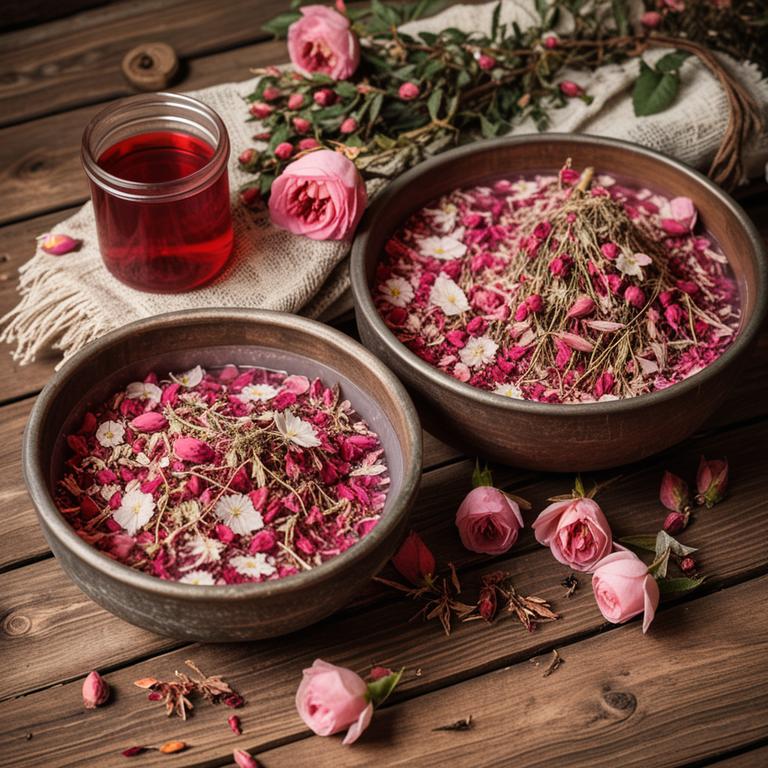10 Best Herbal Baths For Lower Back Pain

Herbal baths can be a soothing and natural remedy for alleviating lower back pain by promoting relaxation and reducing inflammation.
Certain herbs such as lavender, eucalyptus, and chamomile are known for their calming and anti-inflammatory properties, making them ideal for inclusion in bath water. Soaking in a warm herbal bath helps increase blood circulation to the lower back, which can ease muscle tension and discomfort. To use this method effectively, it is recommended to add a few drops of essential oils or a handful of dried herbs to warm water and soak for 15 to 20 minutes.
While herbal baths can provide relief, they should be used in conjunction with other treatments like physical therapy or medical advice for persistent or severe lower back pain.
FREE Herb Drying Checklist
How to make sure every batch retains maximum flavor, color, and aroma without the risk of mold or over-drying. Eliminate guesswork and trial-and-error, making herb drying faster, easier, and more efficient every time.
Table of Contents
1. Equisetum arvense

Equisetum arvense, commonly known as field horsetail, has been traditionally used in herbal baths to alleviate lower back pain due to its high concentration of silica and anti-inflammatory properties.
When infused into warm water, the bath helps to soothe muscle tension and reduce inflammation in the lower back area. The silica content in horsetail is believed to support the health of connective tissues, potentially improving joint and spinal mobility. These baths are often recommended as a complementary therapy alongside other treatments for chronic lower back pain.
However, it is important to consult a healthcare professional before using horsetail baths, especially for individuals with existing health conditions or those taking medications.
2. Hypericum perforatum

Hypericum perforatum, commonly known as St. John's Wort, has been traditionally used in herbal baths to alleviate lower back pain due to its anti-inflammatory and analgesic properties.
When infused into bath water, the active compounds in hypericum, such as hyperforin and hypericin, may help reduce inflammation and soothe muscle tension in the lower back. A warm herbal bath with hypericum can promote relaxation and improve circulation, which may contribute to pain relief. However, it is important to consult a healthcare professional before using St. John's Wort, as it can interact with certain medications.
While herbal baths may offer some symptomatic relief, they should not replace professional medical treatment for persistent or severe lower back pain.
3. Salvia officinalis

Salvia officinalis, commonly known as sage, has been traditionally used in herbal baths to alleviate lower back pain due to its anti-inflammatory and analgesic properties.
When infused into bath water, sage helps to relax muscles and reduce tension in the lower back area, offering natural relief from discomfort. The aromatic compounds in sage also promote a calming effect, which can ease stress-related muscle tightness that exacerbates back pain. Regular use of sage-infused baths may support long-term pain management and improve overall circulation in the lower back region.
However, it is advisable to consult a healthcare professional before using sage baths, especially for those with sensitive skin or existing medical conditions.
4. Urtica dioica

Urtica dioica, commonly known as stinging nettle, has been traditionally used in herbal baths to alleviate lower back pain due to its anti-inflammatory and analgesic properties.
When infused into water, the leaves release compounds that may help reduce muscle tension and inflammation in the lower back area. A warm nettle bath can promote relaxation and improve circulation, offering natural relief for chronic or acute lower back discomfort. This method is often preferred for its gentle, non-invasive approach compared to pharmaceutical treatments.
However, it is important to consult with a healthcare provider before using nettle baths, especially for individuals with sensitive skin or existing health conditions.
5. Cnicus benedictus

Cnicus benedictus, commonly known as blessed thorn, has been traditionally used in herbal baths to alleviate lower back pain due to its anti-inflammatory and analgesic properties.
When infused into warm water, the essential oils and compounds from the plant can penetrate the skin, providing localized relief and reducing muscle tension in the lower back area. These baths are believed to improve circulation and ease discomfort associated with conditions such as arthritis or muscle strain. The soothing effect of the bath can also promote relaxation and reduce overall stress, which may contribute to chronic pain.
While not a substitute for medical treatment, herbal baths with Cnicus benedictus may serve as a complementary therapy for managing lower back pain.
6. Achillea millefolium

Achillea millefolium, commonly known as yarrow, has been traditionally used in herbal remedies for its anti-inflammatory and analgesic properties.
When used in herbal baths, yarrow can help soothe muscle tension and reduce pain associated with lower back issues. To prepare an achillea millefolium bath, steep dried yarrow flowers in hot water for several minutes, then add the infused liquid to warm bath water. Soaking in this bath for 15 to 20 minutes may help alleviate discomfort and promote relaxation.
However, it is important to consult with a healthcare professional before using yarrow baths, especially for those with known allergies or medical conditions.
7. Arnica montana

Arnica montana herbal baths have been traditionally used to alleviate lower back pain due to their anti-inflammatory and analgesic properties.
When infused into warm water, arnica montana can help reduce muscle tension and promote circulation in the lower back area. The soothing heat of the bath enhances the absorption of the herb's active compounds, providing targeted relief. However, it is important to note that arnica should not be used on open wounds or broken skin, and individuals with sensitive skin may experience irritation.
As a complementary therapy, arnica montana baths can be a safe and effective option for managing chronic lower back pain when used under proper guidance.
8. Thymus vulgaris

Thymus vulgaris, commonly known as thyme, has been traditionally used in herbal baths to alleviate lower back pain due to its warming and anti-inflammatory properties.
When infused into bath water, thyme essential oil or dried thyme leaves can help relax muscles and improve circulation in the lower back area. The aromatic compounds in thyme may also provide a calming effect, reducing stress-related tension that contributes to chronic pain. Regular use of thyme herbal baths can be a soothing, natural alternative for those seeking relief without pharmaceuticals.
However, it is advisable to consult a healthcare professional before incorporating such remedies, especially for individuals with sensitive skin or existing medical conditions.
9. Lavandula angustifolia

Lavandula angustifolia, commonly known as English lavender, has been traditionally used in herbal baths to alleviate symptoms of lower back pain due to its calming and anti-inflammatory properties.
When infused into bath water, lavender essential oil or dried lavender flowers can help relax tense muscles and reduce inflammation in the lower back area. The aromatic compounds in lavender also promote relaxation and may help ease the overall stress that contributes to chronic back pain. Regular use of lavender-infused baths can provide a soothing, natural alternative to conventional treatments, offering both physical and emotional relief.
However, it is recommended to consult with a healthcare professional before incorporating herbal baths into a pain management routine.
10. Rosa canina

Rosa canina, also known as rose hip, is a traditional herbal remedy that has been used for centuries to support joint health and reduce inflammation.
When used in herbal baths, rosa canina can help alleviate lower back pain by promoting circulation and reducing muscle tension in the affected area. The anti-inflammatory properties of rose hips may help ease the discomfort associated with conditions like arthritis or degenerative disc disease. To prepare a rosa canina bath, steep the dried rose hips in hot water for several hours, then add the infusion to warm bath water.
Regular use of this soothing bath can provide a natural, gentle approach to managing lower back pain and improving overall well-being.